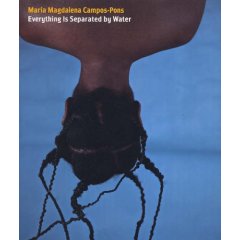Some brief thoughts and comments I felt like sharing:
1. A few weeks ago I went to jummah at a new masjid (new to me anyway) in a new city. It was the second time in my life that I've been to a jummah service where the khateeb didn't utter a lick of English. (The other time I was in Chicago and went to one of the more prominent Islamic centers, not realizing that the congregation there took the "hardline" position that the khutbah had to be in Arabic. Although as a concession they did have a nice informational talk which explained the content of the "khutbah"... in Urdu.)
Some time later I went back to that masjid (not for jummah) and had a really positive experience. The people were friendly and the group was pretty traditional, focused on spirituality. I'm feeling much better about the prospect of finding a good community.
2. The month of Ramadan is coming this week. Wow. I don't feel ready.
3. On a totally different note, I'm not sure if Miami is more racist than any other city, but I have definitely been hearing more N-bombs; at poetry spots, as an insult, in casual conversation, being sung along to a hip-hop beat, etc. What is really surprising is not just hearing it in a song, but the fact that on multiple occasions I would see folks sing along pretty shamelessly. Once or twice I even heard a DJ turn off the music precisely so that the crowd would shout out an n-bomb-containing chorus as a group.
4. On another totally different note, I've also seen a lot more (Christian) fishes on the backs of cars in Miami. The fish is a really interesting symbol, but I think the meaning is actually cheapened by having it appear in a widespread fashion on cars. Back in the days when Christianity was a persecuted faith, the fish was used by Christians to secretly identify one another. When meeting for the first time, one Christian could innocently trace out an arc in the ground with their foot. And if he or she understood the message, a second Christian could complete the fish by drawing a second arc.
Back when I was a post-Christian-not-quite-Muslim and I would occasionally write out my thoughts on religion, I used the fish symbol as part of my personal system of abbreviations. {fish symbol}-ianity would refer to my concept of the authentic religion of Jesus which emphasized the spiritual and ethical principals of the Sermon on the Mount while {cross symbol}-ianity would refer to the death-based Pauline religion which came afterwards. (This isn't completely different from the distinction between prophetic and Constantinian Christianity which has appeared in previous posts). I plan to say more about {fish symbol}-ianity in a later post (when I have more time) but for now I'll say that I find it incredibly ironic that an ancient symbol which is thoroughly grounded in Christianity's origins as a secretive and persecuted faith should appear openly and ubiquitously in modern times.
And finally...
5. It is interesting and weird and funny being in a Latino-majority city. But I often wonder about how uncomfortable it must be for non-Latinos. What if due to an odd sequence of geopolitical events some major American city suddenly experienced a large increase in the number of people of Chinese descent to the point that Chinese and Chinese-Americans basically established a sort of hegemonic control of the city in the same way that ("white") Cubans run Miami? I'm not sure how "at home" I would feel in such a situation. Just something to consider.
richards' racist rant (epilogue)islam and the passion (for social justice)
